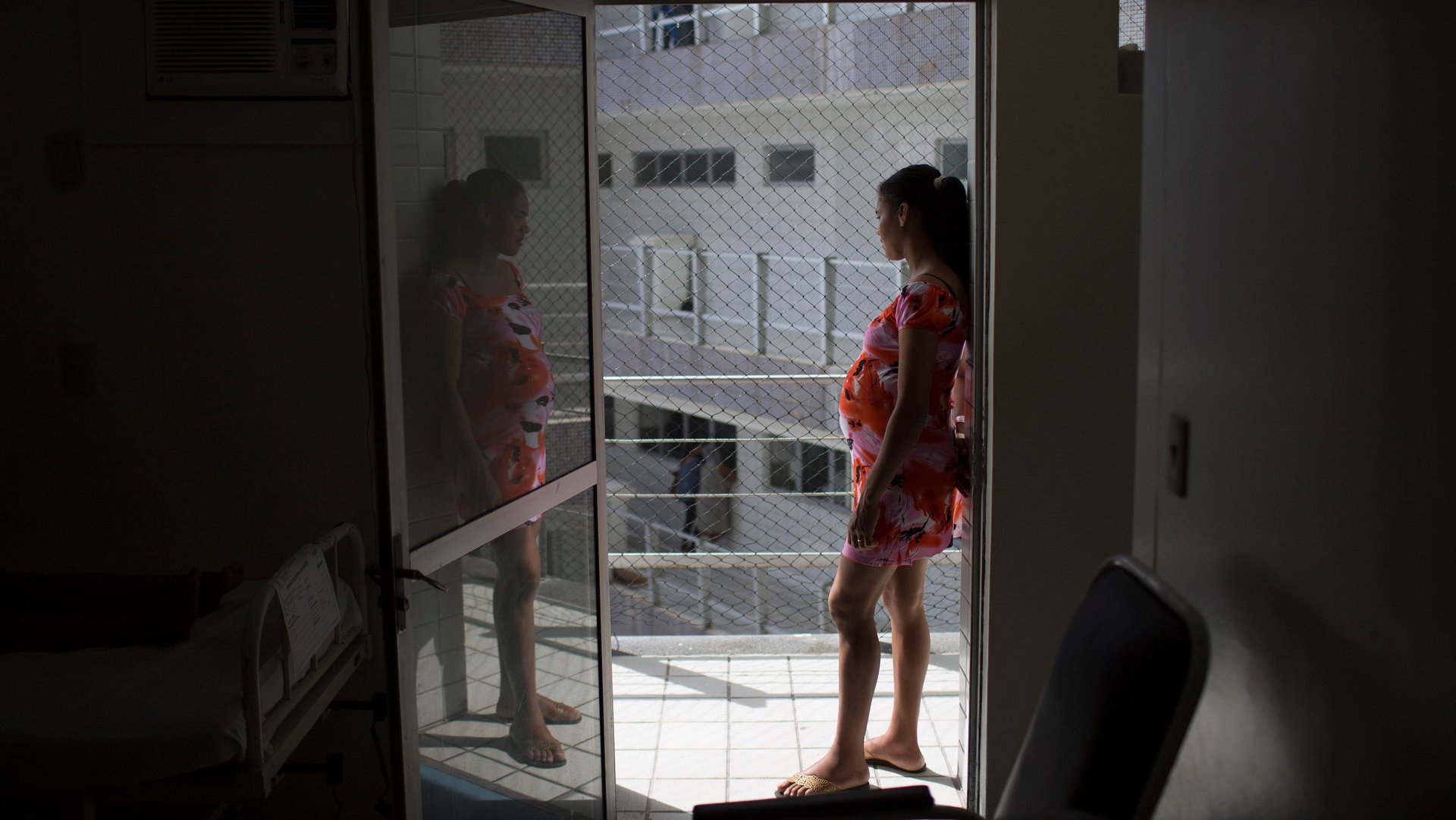What would happen if entire countries affected by Zika put off having babies?
The World Health Organization issued guidelines last week recommending that people in much of Latin American and the Caribbean consider delaying pregnancy in the wake of the Zika virus. This advice could be tough to follow: Some of the 46 countries affected by Zika do not offer couples reliable, affordable access to birth control or abortion. But the WHO’s recommendation does raise an important demographic question. If millions of people were willing and able to take this advice, what would be the long-term effects on their countries’ populations?


The World Health Organization issued guidelines last week recommending that people in much of Latin American and the Caribbean consider delaying pregnancy in the wake of the Zika virus. This advice could be tough to follow: Some of the 46 countries affected by Zika do not offer couples reliable, affordable access to birth control or abortion. But the WHO’s recommendation does raise an important demographic question. If millions of people were willing and able to take this advice, what would be the long-term effects on their countries’ populations?
One key factor is how long couples would delay childbirth. Some infectious disease experts say it is possible that after one season of Zika transmission, most individuals in the population would become immune after being bitten by a mosquito with Zika, and so the prevalence of the virus would decrease rapidly. The WHO guidelines, therefore, seem likely to be short-term—perhaps one or two years. In considering how much this period of time would affect the birth rate in these countries, recent history offers a range of scenarios to examine.
Following the Baby Boom of 1946-1964, the United States experienced a “Baby Bust” during the late 1960s and 1970s. The total fertility rate reached a peak of 3.7 births per woman in the late 1950s, and fell to a low of 1.74 in 1976. Fertility rates in the US did increase somewhat the 1970s, but never returned to Baby Boom levels. However, unlike the current situation with the Zika virus, the US “Baby Bust” was part of a long-term trend of declining fertility in the 20th century, interrupted by the mid-century Baby Boom.
More relevant could be the situation of Japan in 1966, when the number of births decreased by one-fourth (25.3%). That year was known as a “fiery horse” year, and girls born during a fiery horse year were considered to have poor prospects for marriage. Some of the reported decrease in births may have actually been intentional mis-registration of female births from 1966 to either 1965 or 1967, which were more favorable years for girls to be born.
Another example of a short-term fertility decline occurred in China between 1958 and 1961. During that period, a severe famine resulted in about 30 million premature deaths—that is, individuals dying at younger ages than typically expected. In the years before the famine, the total fertility rate was slightly above 6 births per woman, and fell to 3.4-4.7 births per woman during the famine. Just after the famine, there was a slight rebound in the total fertility rate (7.6 births per woman in 1963-64 and 6.8 births per woman in 1964-65).
What do these examples suggest for Latin American and Caribbean countries experiencing the Zika virus? It depends in part on the country. The largest country in Latin America, Brazil, already has below-replacement fertility (1.8 children per woman). So any further declines in fertility that result from the WHO recommendations are likely to be just temporary.
A few Latin American and Caribbean countries still have above replacement fertility (for example, Guatemala with 3.1 children per woman, and Haiti with 3.2 children per woman). In these cases, the WHO guidelines could jump-start a long-term decline in birth rates in countries with more favorable socio-economic conditions, such as universal education for girls and effective family planning programs.
Still, let’s not forget that the delays the WHO recommends are likely to last only one or two years. Most women who do postpone should still be physically able to conceive and carry a pregnancy to term. Assuming that we are able to get the Zika virus under control, any falloff in pregnancies should have relatively small—though noticeable—demographic repercussions. As with the Japanese 1966 birth rate drop or China’s famine of 1958-1961, delayed pregnancies can interrupt or even damage individual lives. But the long-term effects, looking at population data years later, are almost imperceptible.